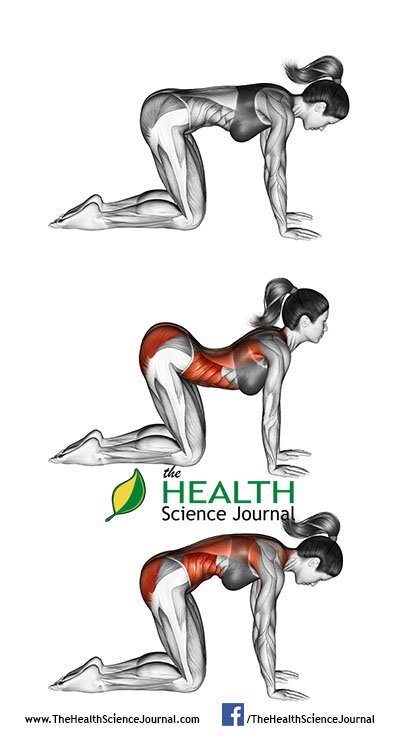Middle back pain, as its name implies, occurs in the middle back or thoracic spine. The pain often starts from the bottom of the neck, and it goes all the way down to the waist. The first step toward treating middle back pain is to understand what causes it. Here are a few things you need to know about middle back pain.
How Common Is Middle Back Pain?
A few surveys were conducted to find out how many people experienced middle back pain, and the results varied. While one survey reported 4 out of 100 people, another reported 72 out of 100 individuals had back pain. The survey also discovered that teenage girls were the most susceptible to middle and lower back pains.
Should You Be Concerned About Middle Back Pain?
Middle back pain is fairly common among individuals of all age groups. Most individuals who experience middle back pain recover in a few weeks without undergoing any treatments. However, in some instances, middle back pain could indicate a serious injury or the onset of a major medical condition. If you’re experiencing persistent middle back pain, it is best to consult your doctor.
Middle Back Pain Risk Factors
There are several reasons individuals experience middle back pain. Some of the most common risk factors for this type of pain include:
- Age and gender;
- Minor bone injuries;
- HIV infection;
- Long-term steroid use;
- Bacterial infection;
- High fever;
- Changes in the shape of the spine;
- General weakness.
Causes of Middle Back Pain
Common Causes
- A sudden strain or sprain due to an accident;
- Using a heavy backpack;
- Sitting in a slouched position for several hours;
- Lack of exercise;
- Performing an exercise incorrectly.
Less Common Causes
- Narrowing of the middle part of the spine by wear and tear;
- Slipped discs;
- Fractures in the vertebrae;
- Spinal infection;
- Osteoporosis;
- Spinal osteoarthritis;
- Shingles, especially in people over the age of 60;
- Spinal tumors;
- Scheuermann’s disease, which involves inflammation in the spine;
- Ankylosing spondylitis, which is inflammation of the joints between the vertebrae.
Not all middle back pain is caused by spinal issues. Other causes can include conditions affecting the lungs, esophagus, stomach, pancreas, and the gallbladder.
Required Tests and Screenings
For short-term middle back pain caused by sports-related injuries, the doctor may suggest some tests and screenings. These tests will help the medical examiner determine the cause of back pain and devise an appropriate treatment plan. The doctor will also prescribe certain tests for middle back pain caused by severe injuries or long-term health issues. Some of the most common types of tests used to diagnose middle back pain include blood tests, magnetic resonance imaging (MRI) scans, and x-rays.
Treatment Options
In most cases, minor to moderate middle back pain can be cured with painkillers. However, in some instances, a comprehensive treatment plan is needed. If the pain is caused by a joint in the spine, it may be treated with an injection. In the event there is a slipped disc, a surgery called laminectomy is required. Percutaneous thoracic intervertebral disc nucleoplasty is another treatment option for middle back pain.
Taking preventive measures and adopting a healthy lifestyle can lower the risk of experiencing middle back pain. If you, your child, or any of your loved one experiences thoracic pain or middle back pain, reach out to a doctor immediately. Getting an early diagnosis is the first step toward mitigating or completely curing the pain.
Effective Stretches to Relieve Middle Back Pain
Middle back pain impacts three main muscle groups called the latissimus dorsi, middle trapezius, and rhomboids. These muscles work together to control the movements of the shoulder joints and girdle. The pain usually results from long hours of sitting at work or at school. Stretching your back every now and then can help you maintain proper flexibility, reduce muscle tension, and prevent potential discomfort.
Doing a 5 to 10 minute warm-up before an exercise is necessary to prevent muscle strain. Perform light cardio workouts and engage your upper and middle back and shoulder joints to perform shoulder shrugs, spine twist, and arm circles. Once your muscles are warmed up, perform the following stretches.
1. Cat-Cow Pose

The cat-cow pose combines two different types of yoga, and it is intended to stretch the mid-back muscles and mobilize your spine. Kneel straight and put your hands on the ground with arms straight, your hips over the knees and shoulders over the hands. Exhale and lift your middle back upward like a cat, slightly lower your head, and curl your pelvis inward. Next, inhale and tile your tailbone upward, raise your head, and curve your lower back. Repeat the exercise three to five times.
2. Seated Mid-Back Stretches

Seated mid-back stretches can be performed just about anywhere, even when sitting at your work station. Perform this exercise whenever you feel tension in your mid-back muscles. Clasp your hands in front and elevate them to your shoulder height, rolling your shoulders forward to an extent. Hold the pose for a bit and then release.
3. Monkey Lat Stretch

In the monkey lat stretches, gravity is used to stretch the back muscles and decompress the spine. This stretched relaxes the muscles after a heavy workout at gym or a long day of sitting on a chair. Grab an overhead bar and bend your legs to hang, so that your weight is supported only by your arms. Hang for 20 to 60 seconds and transfer your weight slowly back onto your feet, making sure not to drop off the bar. If you are unable to support your weight safely with only your arms, transfer some of your weight to your toes or feet. This stretch can also be combined with shoulder shrugs.
Performing these stretches on a daily or as needed basis can lower your risk of experiencing serious middle back pain. Make sure to eat a healthy diet to stay in good physical condition and engage in regular exercise to keep your joints and muscles strong.
Author Bio:
For the past several years, William Johnson has been working at The Spine Institute. After graduating from University of Arizona with a degree in health sciences, William Johnson worked in several health care organizations and conducted countless family counseling sessions. At Beverly Hills’ Spine surgeon, he oversees the agency’s quality control procedures and ensures that the company follows its mission in letter and spirit. William Johnson has also written and published several articles on spine care.
References:
https://spinecare.luminhealth.com/conditions/middle-back-pain/
https://www.healthline.com/health/middle-back-pain
https://www.healthline.com/health/fitness-exercise/mid-back-stretches#bridge-pose
http://chirohealing.com/2016/03/14/mid-upper-back-stretches-loosen-upper-muscles-2/
http://www.vancouversun.com/health/Monkey+stretch/3469028/story.html
https://www.thehealthsciencejournal.com/lumbosacral-neuritis-symptoms-and-treatment-options/


